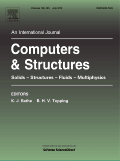
COMPUTERS & STRUCTURES
Scope & Guideline
Exploring New Frontiers in Engineering Methodologies
Introduction
Aims and Scopes
- Computational Modeling and Simulation:
The journal publishes works that utilize computational techniques to model and simulate the behavior of various structural systems, including complex materials and geometries. - Structural Optimization:
A significant focus is on optimization methodologies, particularly in topology optimization and design optimization for various structural applications, often considering material properties and environmental impacts. - Advanced Materials and Methods:
Research on the application of advanced materials, such as composites and metamaterials, and innovative methods, including machine learning and data-driven approaches, is a core area of focus. - Dynamic Analysis and Structural Health Monitoring:
The journal also emphasizes dynamic analysis of structures under various loads, including seismic and impact loads, as well as health monitoring techniques utilizing advanced sensing and data analytics. - Uncertainty Quantification and Reliability Analysis:
There is a strong emphasis on methods for uncertainty quantification, risk assessment, and reliability analysis of structural systems, addressing the inherent uncertainties in material properties and loading conditions.
Trending and Emerging
- Machine Learning and AI Applications:
There is a growing emphasis on the integration of machine learning and artificial intelligence in structural analysis, optimization, and health monitoring, showcasing the potential of data-driven approaches in enhancing traditional methodologies. - Topology Optimization:
Topology optimization continues to gain traction, with innovative applications in various fields, including additive manufacturing, where the design of complex geometries is paramount. - Hybrid Computational Techniques:
Emerging hybrid methods that combine traditional computational techniques with modern algorithms, such as evolutionary algorithms and neural networks, are gaining popularity for their efficiency and effectiveness in solving complex problems. - Multiscale Modeling:
Research focusing on multiscale modeling approaches is becoming increasingly prominent, addressing the need to understand material behavior at different scales and its impact on structural performance. - Sustainability and Resilience in Design:
There is a notable trend towards incorporating sustainability and resilience considerations in structural design, reflecting growing concerns over environmental impacts and the need for structures to withstand extreme events.
Declining or Waning
- Traditional Finite Element Analysis:
While still relevant, traditional finite element methods are increasingly complemented or replaced by more advanced techniques, such as meshless methods and isogeometric analysis. - Basic Structural Analysis Techniques:
There seems to be a declining interest in basic linear static analysis techniques, as researchers focus more on non-linear, dynamic, and complex analyses that reflect real-world scenarios. - Conventional Material Models:
Research involving conventional material models without consideration of advanced materials or innovative modeling techniques appears to be waning, as the field embraces more complex and realistic material behaviors. - Static Load Analysis:
Static load analysis is becoming less prominent as dynamic loading scenarios, including earthquake and blast effects, are prioritized in research due to their practical implications in modern engineering. - Simplistic Design Approaches:
There is a noticeable shift away from simplistic design approaches that do not incorporate the advanced computational techniques and multi-disciplinary considerations that are now standard in structural engineering.
Similar Journals
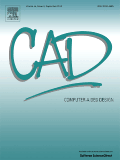
COMPUTER-AIDED DESIGN
Bridging Academia and Industry for Enhanced Design SolutionsCOMPUTER-AIDED DESIGN is a premier journal published by Elsevier Science Ltd, dedicated to the dynamic fields of Computer Graphics and Computer-Aided Design, as well as Industrial and Manufacturing Engineering. With a long-standing history since its inception in 1968, this journal plays a vital role in disseminating high-quality research and innovative methodologies that shape the future of design and engineering practices. It is positioned in the upper quartiles (Q1 and Q2) across multiple categories, highlighting its impact and reputation, with a notable 74th percentile ranking in Computer Graphics and Computer-Aided Design related fields. Researchers, professionals, and students will find valuable insights and advancements that not only push the boundaries of knowledge but also facilitate practical applications in the industry. The journal's emphasis on enhancing collaboration between academia and industry aligns with contemporary trends towards integrated design and manufacturing processes, making it an essential resource for anyone looking to stay at the forefront of technological advancement. Authors are encouraged to submit original articles that contribute to the multidisciplinary discourse within these domains.

FINITE ELEMENTS IN ANALYSIS AND DESIGN
Exploring the frontiers of computational mechanics.FINITE ELEMENTS IN ANALYSIS AND DESIGN, published by Elsevier, is a leading international journal dedicated to advancing the field of engineering analysis using finite element techniques. With a strong focus on theoretical and applied contributions, the journal spans a broad spectrum of subjects, including structural analysis, computational mechanics, and computer graphics applications, making it an essential resource for researchers, professionals, and students alike. As evidenced by its impressive Q1 ranking in multiple categories, including Analysis and Computer Graphics, and its Scopus rankings placing it in the top 10% across several fields, it serves as a vital platform for disseminating cutting-edge research and innovative applications within the field. The journal, with an ISSN of 0168-874X and an E-ISSN of 1872-6925, publishes articles that emphasize rigorous mathematical methodologies and computational advancements, ensuring high relevance for contemporary engineering challenges. With a history extending from 1985 to 2024, it continues to shape the discourse and progress within the finite element community.
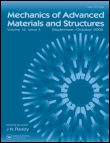
MECHANICS OF ADVANCED MATERIALS AND STRUCTURES
Fostering collaboration in advanced materials research and applications.Mechanics of Advanced Materials and Structures is a distinguished journal published by Taylor & Francis Inc, focusing on the innovative fields of Civil and Structural Engineering, Materials Science, Mechanical Engineering, and Mechanics of Materials. With ISSN 1537-6494 and E-ISSN 1537-6532, this journal is positioned within the Q2 quartile rankings of its categories, demonstrating its significant scholarly impact. It has been a pivotal platform since its inception in 1997, providing researchers and professionals with comprehensive insights and the latest findings, until the expected closure in 2024. Situated in the United Kingdom, the journal is dedicated to enhancing the understanding of complex materials and structural behavior through rigorous peer-reviewed articles. Its high visibility in Scopus rankings further underscores its importance, making it an essential resource for those engaged in advanced materials research and structural analysis. With options for open access, the journal ensures broad dissemination of knowledge, fostering a collaborative environment for researchers, practitioners, and students alike.
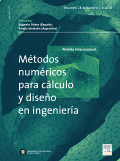
Revista Internacional de Metodos Numericos para Calculo y Diseno en Ingenieria
Elevating Engineering Design through Open Access ResearchRevista Internacional de Metodos Numericos para Calculo y Diseno en Ingenieria is a prominent academic journal dedicated to the dissemination of innovative research and methodologies in the fields of applied mathematics and engineering. Published by SCIPEDIA S L in Spain, this journal has been an essential resource for researchers since its inception in 1987, transitioning to an Open Access model in 2016 to enhance accessibility and foster collaboration among professionals and academics globally. Currently indexed in Scopus, it holds a Q4 category designation in both applied mathematics and miscellaneous engineering fields for 2023, reflecting its focus on advancing numerical methods to solve engineering problems. Despite ranking at the lower percentile, it serves as a vital platform for emerging scholars and practitioners aiming to contribute to cutting-edge developments in numerical techniques and engineering design. The journal's commitment to providing a forum for new ideas makes it an invaluable asset for students, researchers, and industry professionals seeking to stay abreast of advancements in the discipline.
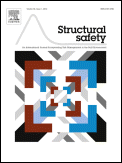
STRUCTURAL SAFETY
Fostering excellence in structural analysis and design.STRUCTURAL SAFETY is a premier journal dedicated to advancing the field of engineering with a focus on safety, risk, reliability, and quality in structural analysis and design. Published by Elsevier, this esteemed journal boasts an impressive Impact Factor and ranks in the top quartiles (Q1) of key categories including Building and Construction, Civil and Structural Engineering, and Safety, Risk, Reliability, and Quality. With a significant history spanning from 1982 to 2024, STRUCTURAL SAFETY fosters scholarly exchange among researchers, professionals, and students by publishing innovative and high-quality research articles that contribute to the safety and resilience of engineered structures. The journal operates without open access barriers, ensuring a broad audience can access invaluable insights in the engineering realm. Its distinguished Scopus rankings further underscore its impactful role within the academic community, making it an essential resource for anyone invested in the discipline of structural safety.

THIN-WALLED STRUCTURES
Unveiling Breakthroughs in Thin-Walled DesignTHIN-WALLED STRUCTURES is a premier international journal published by Elsevier Science Ltd, focusing on the critical areas of Building and Construction, Civil and Structural Engineering, and Mechanical Engineering. With an impressive impact factor and categorization in the Q1 quartile of each respective field, this journal stands at the forefront of engineering research, boasting commendable Scopus rankings—52nd for Mechanical Engineering, 18th for Building and Construction, and 32nd for Civil and Structural Engineering. Since its inception in 1983, THIN-WALLED STRUCTURES has provided a vital platform for disseminating innovative research, practical applications, and theoretical advancements in thin-walled structures, encouraging the development of safer and more efficient design methodologies. Although it operates on a traditional access model, the journal is committed to maintaining high-quality peer review and publishing, making it an essential resource for researchers, professionals, and students aiming to contribute to and benefit from the latest advancements in this dynamic field.

EARTHQUAKE ENGINEERING & STRUCTURAL DYNAMICS
Connecting research and practice for safer structures.EARTHQUAKE ENGINEERING & STRUCTURAL DYNAMICS, published by Wiley, is a leading journal recognized for its significant contributions to the domains of civil and structural engineering, as well as geotechnical engineering and engineering geology. With an impressive Q1 ranking in multiple categories, including Civil and Structural Engineering, and an esteemed Scopus ranking placing it in the 82nd percentile, the journal serves as a premier platform for disseminating pioneering research and innovative methodologies related to earthquake engineering and dynamic structural analysis. Established in 1972, this journal boasts a comprehensive coverage of topics from theoretical developments to practical applications, making it an essential resource for researchers, industry professionals, and students eager to expand their understanding of seismic safety and structural resilience. Though it does not offer open access, the journal continues to be a cornerstone for scholarly communication within the earthquake engineering community, advancing knowledge that shapes better engineering practices worldwide.

Frontiers of Structural and Civil Engineering
Exploring New Frontiers in Architectural ExcellenceFrontiers of Structural and Civil Engineering, published by HIGHER EDUCATION PRESS, is a premier academic journal dedicated to advancing the fields of architecture, civil, and structural engineering. With an ISSN of 2095-2430 and E-ISSN of 2095-2449, this journal caters to the dissemination of high-quality research and innovative practices from 2012 onwards, highlighting important developments up until 2024. Ranked in the top quartile (Q1) for Architecture and Q2 for Civil and Structural Engineering in 2023, it holds an impressive Scopus ranking of #19 out of 189 in Architecture and #101 out of 379 in Civil and Structural Engineering, reflecting its impact and relevance in the scientific community. This journal invites contributions that demonstrate pioneering approaches, fostering collaboration among researchers, professionals, and students alike, and significantly contributes to the global knowledge base in the engineering disciplines.

STRUCTURAL DESIGN OF TALL AND SPECIAL BUILDINGS
Pioneering Research in Tall and Special Buildings.STRUCTURAL DESIGN OF TALL AND SPECIAL BUILDINGS is a prestigious journal published by Wiley that focuses on cutting-edge research and advancements in the field of structural engineering, particularly emphasizing tall and special structures. Since its inception in 2003, the journal has become an invaluable resource for academics and practitioners, showcasing innovative design methodologies, case studies, and theoretical contributions. With an ISSN of 1541-7794 and E-ISSN of 1541-7808, this esteemed publication holds impressive Scopus rankings, including Q1 in Architecture, making it a go-to source for the latest developments in engineering related to tall buildings and complex structures. The journal is known not only for its rigorous peer-reviewed articles but also for fostering a collaborative environment among professionals and researchers worldwide. Although it is not an open-access journal, readers from various disciplines, such as architecture, civil and structural engineering, and building construction, will find compelling insights that drive the industry forward. For those committed to excellence in structural design, STRUCTURAL DESIGN OF TALL AND SPECIAL BUILDINGS remains at the forefront of innovation and knowledge dissemination.

Bridge Structures
Innovating Design and Maintenance in Structural IntegrityBridge Structures is an esteemed academic journal dedicated to the field of structural engineering, particularly focusing on the design, analysis, and maintenance of bridge systems. Published by IOS PRESS, a reputable publisher known for its contributions to various scientific fields, the journal serves as an integral platform for disseminating innovative research and advancements within the domain. With an ISSN of 1573-2487 and an E-ISSN of 1744-8999, Bridge Structures has established itself over the years—covering contributions from 2005 to 2024. The journal has attained a commendable ranking within the Q3 category in Building and Construction and holds a position within the 28th percentile among its peers according to the Scopus rankings. Though the journal operates on a subscription basis, its commitment to advancing engineering knowledge is paramount, making it essential reading for researchers, practitioners, and students eager to deepen their understanding of bridge engineering. The journal not only explores theoretical advancements but also emphasizes practical applications, providing a well-rounded perspective on current challenges and solutions in the field of bridge structures.